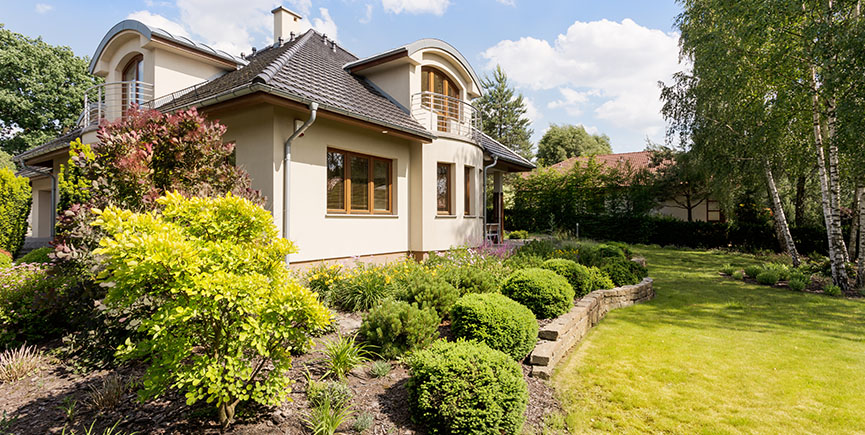How To Spot Powdery Mildew And Get Rid Of It?

How To Spot Powdery Mildew And Get Rid Of It?
Trees and shrubs can be the main targets of fungi and molds and this can really affect the general health of the tree and you should get help from tree services for getting rid of this condition. Here is everything you need to know about powdery mildew on trees and leaves and how you can control it.
Powdery Mildew
Powdery mildew, as the name suggests, is a type of buildup of fungus and bacteria on the leaves of trees or shrubs and it can mainly be visible in the form of white, powdery patches on the leaves or the base of the stem. It is a fungal disease and the “powder” is basically the appearance of thousands and thousands of tiny spores of fungus on the leaves. Since it is white or grayish and it has a powdery and soft appearance, it is known as powdery mildew.
Powdery mildew is caused by many fungi, but the main one is Erysiphe cichoacearum. It is the localized and external deposit or growth of fungal spores, which can be quite alarming at first glance. Powdery mildew can occur on any species of tree, but the main ones in which it might be a lot common, include maple trees, fruit trees like apple trees, elm trees, oak trees, and more.
Powdery mildew is more likely to occur in young trees when the leaves are just beginning to sprout out of the stem. The fungus will attack the leaves and firstly, it might look like dew drops or snow on the leaf surface, but upon closer inspection, it can be seen that the leaf is covered with a layer of fungus.
How To Spot Powdery Mildew?
Here are some ways and telltale signs by which you can identify powdery mildew on leaves:
- The appearance of the fungus may be similar to snow or a white powder-like substance. That is the fungus latched onto the tree leaf.
- There also might be gray spots here and there and the powder might be a combination of white and gray colors.
- The mildew might spread from the leaves to the stem, neighboring leaves, and other places, which are in close vicinity of the infected tree.
- The physical shape of the leaf, covered with powdery mildew, might be different from the healthy leaves. The affected leaves may be curled inward, twisted, or may have irregular shapes.
- If the powdery mildew is left unnoticed for a long time, the leaves might lose their bright green color and turn yellow. Eventually, the leaf will detach itself from the tree and fall and die.
- If powdery mildew has been latched onto a leaf for a long time, the leaf will turn purple or red, in some cases too. The color change usually depends from tree to tree and what is the severity of the fungus.
- If you have planted young trees, then they are more prone to be infected with powdery mildew. Since young trees are not able to protect themselves against the weather and humidity, the fungus can latch on to young leaves and sprouts more easily and this can, ultimately, affect the growth of the tree in the early days.
Is Powdery Mildew Dangerous?
Some might think that powdery mildew is quite dangerous and that it can kill trees, but this isn’t mostly the case. Yes, it is a fungal disease and it can weaken and affect the leaves on which the fungus is present, but it doesn’t kill the tree, per se.
It will have a negative effect on the surrounding and it may look unpleasant, but it doesn’t harm the tree, not more than affecting a few leaves.
Since the fungus is present on the base of the leaf, which is the main area where photosynthesis occurs, it can be hard for leaves to replenish themselves and get the necessary nutrition they need, which in turn, can make the leaf weak and can, ultimately, die.
Young plants, which are placed in shaded areas can die from too much powdery mildew and absence of sunlight. If powdery mildew is present on trees that bear flowers, then it can lead to premature falling and browning of the petals and it can also lead to less flower production.
In a nutshell, powdery mildew is a pain to deal with because it does have negative effects on plants and trees, but if your concern is the death of the tree because of this fungus, then you can rest assured, because it doesn’t normally happen. But don’t hesitate to consult arborist services Potomac for controlling powdery mildew.
Causes Of Powdery Mildew
Here are the ideal conditions in which powdery mildew thrives:
- Places which are hot and humid can be prone to being a perfect breeding ground for fungus and powdery mildew is actually a lot more common to occur in these conditions.
- Lack of sunlight can also lead to excessive production of powdery mildew on trees.
- Usually, cooler places with dry and humid weather are considered to be the perfect conditions for powdery mildew to thrive and spread onto other trees, which are in close contact with one another.
- If there are too many trees crowded with each other in a small and shaded place, then this can also lead to the formation of powdery mildew on the leaves. The close proximity of the trees can make it easier for the spores to spread on other leaves as well.
- Powdery mildew also thrives in places where there isn’t a lot of wind. The wind is the natural ventilation system of the atmosphere and if there’s no ventilation, then it can become an ideal breeding ground for bacteria and fungus to grow on trees.
How To Prevent/Get Rid Of Powdery Mildew?
Here are some things you can do to prevent the spreading and production of powdery mildew, in general:
Prevent Overcrowding Of The Trees
Place trees and plants at a distance from each other and make sure that there is breathing room for each of the plants. Make sure that the area where you plant trees and shrubs is well-circulated with air. The space needs to have enough sunlight and air circulation to prevent fungal spores from forming and latching onto the leaves of trees and shrubs.
Put The Plants In Sunlight
Sunlight can do wonders in getting rid of powdery mildew. Sunlight acts as an agent, which can protect the trees from getting infected with fungus. So, if the tree or plant is not shade-loving, then try to put it in sunlight, to make it healthy.
Fungicides
Use fungicides for the prevention and killing of existing fungi on the leaves. Make sure that you are using a fungicide, which is registered since most pesticides and chemicals of this kind are banned in many countries.
Pruning
Try to prune the trees. This will improve the circulation of the trees and spores will not form in the future.
Conclusion
Powdery mildew can form on any type of tree, and it’s important to identify it and get rid of it because you don’t want the tree or the surrounding plants to be affected adversely. If your tree is weak and showing signs of problems, get in touch with tree removal companies Bethesda to cut down the tree.

